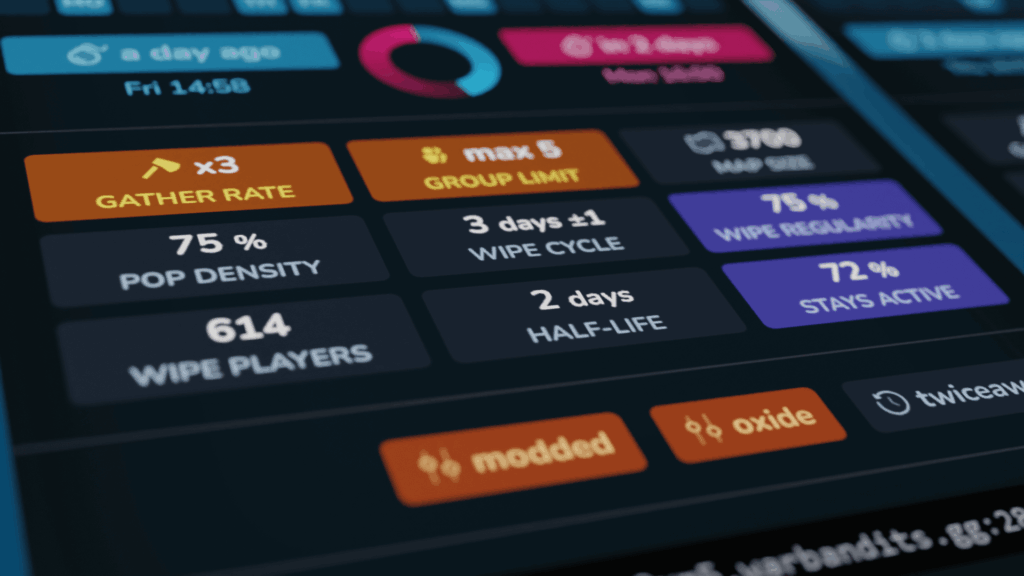
How We Collect Server Data
Rustalyzer pulls server data from two main sources:
- Steam Public Server List
Every Rust server that’s publicly listed on Steam gets indexed automatically. We fetch fresh data every 5 minutes to keep things up to date. - Direct Server Queries (A2S Protocol)
Every 30 minutes, we send A2S queries to servers.
This gives us additional live details like server descriptions, entity counts, map info, and more.
Because we don’t "forget" servers after they go offline, Rustalyzer has built up a huge database over time - even capturing servers that were only online for a few minutes!
What Data We Track
We store a lot of information, but here are some of the highlights:
- Server metadata (name, description, player count(s),server tags, map size, etc.)
- Time-series metrics like:
- Player count over time
- Server FPS
- Entity counts
- Wipe events, including when the server last wiped and predictions for the next wipe
- Custom metadata from verified server owners
All this data is stored inside a powerful TimescaleDB database - perfect for handling millions of time-stamped entries efficiently.
What Happens After Collecting the Data
Fetching the data is just the beginning.
Rustalyzer continuously analyzes and enriches the data to make it even more useful:
- Every hour, we extract and calculate additional metrics, like player stability and density.
- Every hour, server scores and ranks are recalculated based on their current performance.
- Every hour, recent wipe history is analyzed, and we update our predictions for when each server might wipe next.
The more historical data we gather, the more meaningful metrics we can create - and the better the insights we can offer.
New Metrics: Understanding Wipe Quality

One of our latest focus areas has been wipe quality metrics.
Among the newest additions:
- Wipe Players
This shows how full a server typically gets right after a wipe, helping you find a server that matches your preferred level of action. - Half-Life
This metric shows how many days it usually takes for the server population to drop below 50%, giving you a better idea of server longevity.
There are even more new metrics we have started rolling out - but that is probably a topic for another blog post.
Of course, not every metric is perfect, and Rust servers can be unpredictable, but we are constantly experimenting with new ideas to make server comparison easier, smarter, and more useful.
Why It Matters
Most server lists only show a "snapshot" of servers at one moment.
Rustalyzer goes deeper - by tracking trends, wipe patterns, and long-term server behavior, we can help players:
- Discover stable and active servers
- Pick servers with wipe schedules that fit their playstyle
- Find communities that match their expectations
In short: it is not just about listing servers - it is about understanding them.
What’s Next
This is just the beginning. We are always working on improving how we fetch, analyze, and present server data.
New metrics, smarter wipe predictions, more customization options, and better comparison tools are already on the horizon.
Thanks for being part of the journey - and stay tuned for more updates soon!
PS: If you have ideas, feature requests, or feedback, I would love to hear from you - Rustalyzer is built for the community!